Kitchen island countertop shapes play a crucial role in defining the overall aesthetic and functionality of a kitchen space. Homeowners often face the dilemma of choosing the right shape that complements their kitchen design and meets their practical needs. One popular option is the classic rectangular shape, which provides a versatile and spacious surface for various kitchen activities. Its straightforward design makes it easy to incorporate into both traditional and modern kitchen styles, offering a timeless appeal.
For those looking to add a touch of uniqueness to their kitchen, an L-shaped kitchen island countertop may be an intriguing choice. This shape not only enhances the visual interest of the space but also provides additional seating opportunities. The extended leg of the L-shape can accommodate bar stools, creating a cozy dining area within the kitchen and promoting social interaction during meal preparation.
Curved kitchen island countertops introduce a sense of fluidity and softness to the kitchen environment. The smooth, rounded edges not only enhance safety by eliminating sharp corners but also contribute to a more inviting atmosphere. This shape is particularly well-suited for open-concept kitchens, as it fosters a seamless transition between different areas and encourages a natural flow within the space.
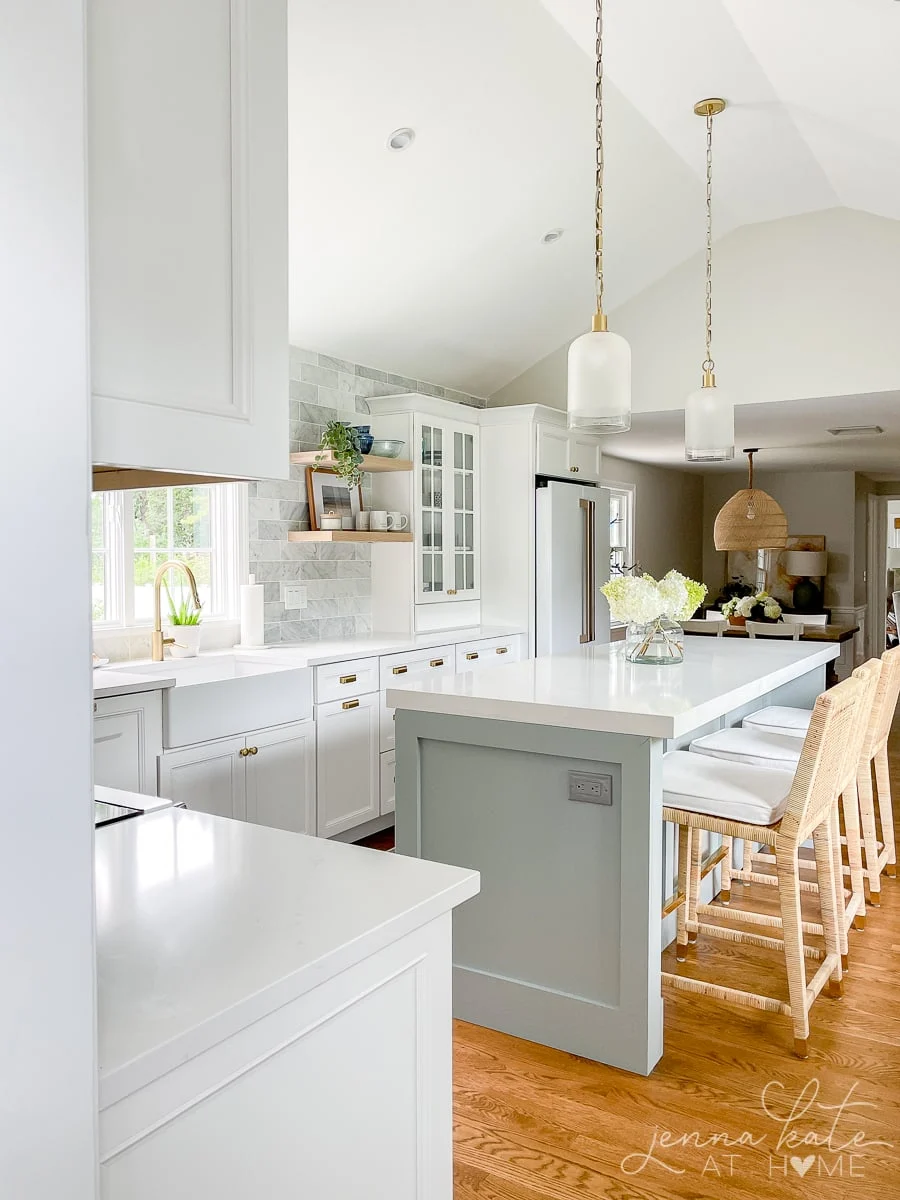
Square kitchen island countertops are a practical choice for smaller kitchens where space optimization is crucial. This shape maximizes the usable surface area while maintaining a compact footprint. It is an excellent option for creating a centralized workspace without overwhelming the kitchen with a large, dominating structure. Additionally, square countertops facilitate efficient movement around the kitchen, making them ideal for cooks who value functionality.
In contemporary kitchen designs, the use of asymmetrical or irregularly shaped island countertops has gained popularity. These unconventional shapes add an element of modernity and artistic expression to the kitchen. They break away from traditional norms, allowing homeowners to personalize their kitchen space and make a bold design statement. The irregular shapes also offer opportunities for creative storage solutions and unique design elements.
Triangular kitchen island countertops, though less common, bring a dynamic and unconventional touch to the kitchen. This shape can be especially effective in promoting efficient workflows, as it allows for a natural separation of different work zones. Triangular islands are also well-suited for kitchens with limited space, offering a streamlined solution that combines functionality with a distinctive design.
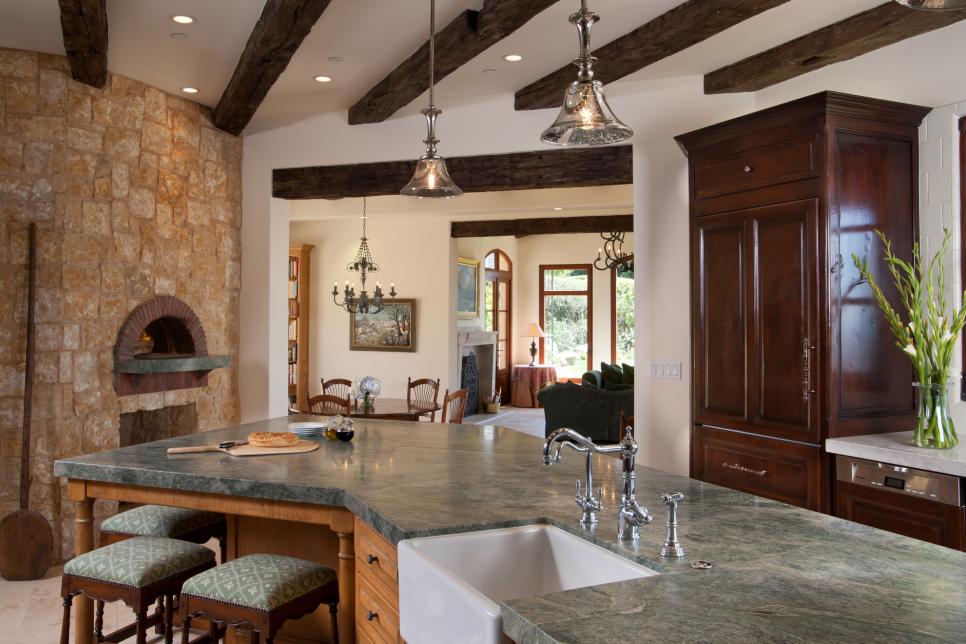
For those who prioritize ample seating space, a kitchen island with a circular countertop can be an excellent choice. The rounded shape encourages a communal atmosphere, making it an ideal setting for entertaining guests or enjoying casual family meals. Circular countertops also facilitate smooth traffic flow around the island, enhancing accessibility and convenience in the kitchen.
The choice of kitchen island countertop shape is not only about aesthetics but also about functionality. The U-shaped kitchen island countertop, for example, creates a well-defined and organized workspace. This shape allows for easy access to different areas of the kitchen and is particularly effective in large kitchens where multiple chefs may be working simultaneously.
In modern kitchen designs, waterfall countertops have become a popular trend. This involves extending the countertop material vertically down the sides of the island, creating a continuous flow. Waterfall edges add a touch of sophistication and contemporary elegance to the kitchen, making it a focal point that seamlessly integrates with the surrounding design elements.
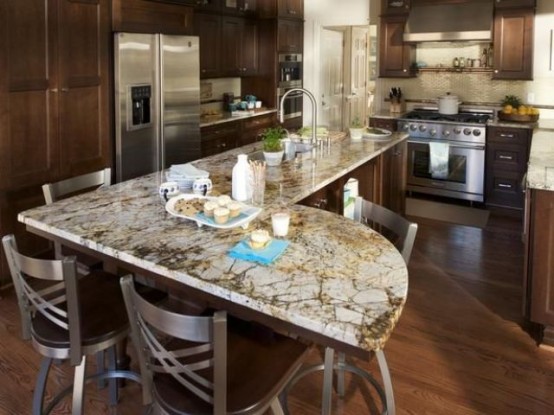
Another consideration for kitchen island countertop shapes is the incorporation of multi-level designs. This involves having different levels or tiers on the island, serving various functions. For instance, a raised portion can act as a breakfast bar, providing a casual dining space, while the lower level can be dedicated to food preparation. Multi-level designs add complexity and versatility to the kitchen, catering to different activities simultaneously.
Beyond aesthetics, the functionality of kitchen island countertop shapes is also influenced by the materials used. Granite, quartz, and marble are popular choices due to their durability and aesthetic appeal. The selection of materials can further enhance the overall design and practicality of the kitchen island. Additionally, considering the color and finish of the countertop material is crucial in achieving a cohesive and harmonious look within the kitchen space.
When contemplating kitchen island countertop shapes, it’s essential to align the choice with the overall kitchen layout. The shape should complement the existing architectural elements and the flow of the space. For open-concept kitchens, the island shape should contribute to a harmonious connection between the kitchen and adjacent living areas, ensuring a seamless transition between different functional zones.
The selection of kitchen island countertop shapes involves a careful balance between aesthetics and functionality. Each shape brings its own set of advantages, catering to various design preferences and spatial requirements. Whether opting for a classic rectangular design, an unconventional asymmetrical shape, or a multi-level structure, homeowners can personalize their kitchen space to reflect their unique style and enhance the overall functionality of the heart of their home.
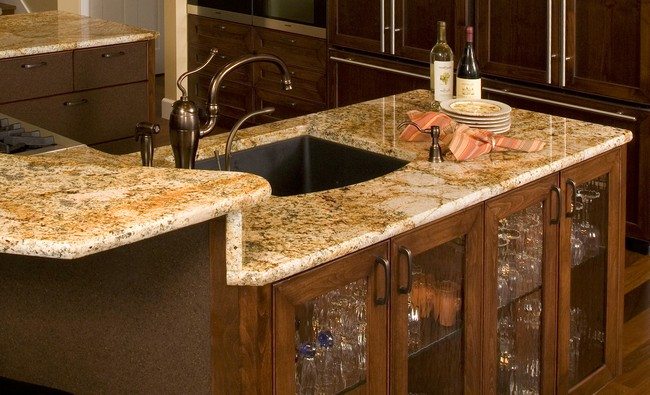
Island Countertop Trends to Transform Your Kitchen Academy Marble

L Shaped Countertop With Island in White Kitchen – Transitional – Kitchen

Tips To Design The Kitchen Island – BeautyHarmonyLife
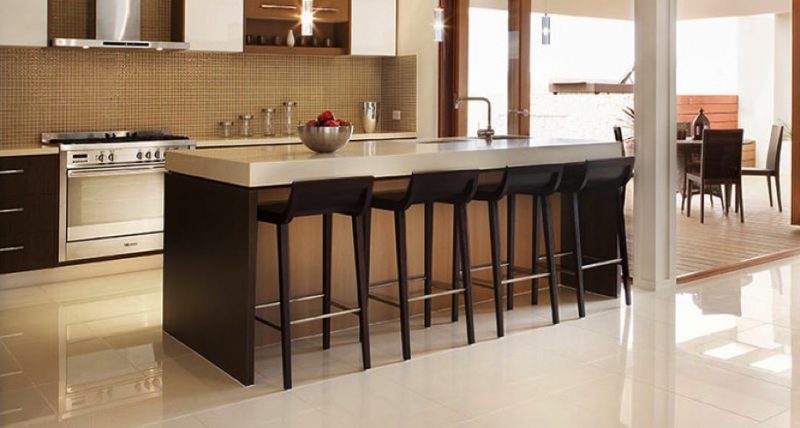
Marble KItchen Island Countertop Fitted with Cutting Board – Transitional – Kitchen

L Shape Kitchen Layout with Island. Close to what our kitchen layout is. Kitchen Remodel

Tile Kitchen Countertops That are Surprisingly Fresh
:max_bytes(150000):strip_icc()/bcd468f443a49006a4a9dba7e484a67b-5baf93e446e0fb0026e46896.jpg)
Kitchen Elements on Pinterest Concrete countertops, The luxury and Marbles

Remodeling in Los Angeles: What Exactly is a Kitchen Island?

Related Posts:
- Antique French Kitchen Island
- Williams And Sonoma Kitchen Island
- Kitchen Island CuRVed Overhang
- Kosas Kitchen Island
- Kitchen Island Instead Of Dining Table
- Country Kitchens With Islands
- Alternative Kitchen Island Ideas
- Americana Vintage Kitchen Island
- Modern Wood Kitchen Island
- How To Make A Kitchen Island Cart